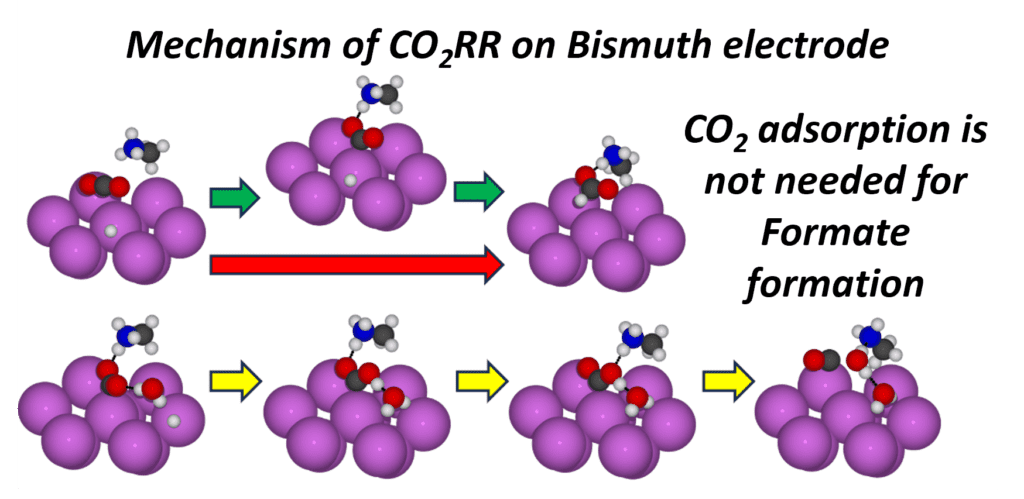
We have uncovered a novel mechanism for CO₂ electroreduction (CO₂RR) to Formate on bismuth electrodes, which does not require CO₂ adsorption on the electrode surface. We also demonstrated the ability to control CO₂RR selectivity (Formate vs. CO) via cation in electrolyte. Notably, the presence of non-metal cations, such as CH₃NH₃⁺, enhances CO production as compared to metal cations. The newly discovered reaction mechanism reshapes our understanding of CO₂RR on Bismuth electrodes. By revealing how non-metal cations influence CO₂RR, this finding aids the design of microenvironments to optimize electrocatalytic processes.
More details can be found at: K. Shi, D. Le, T. Panagiotakopoulos, T.S. Rahman, and X. Feng, “Effect of Ammonium-Based Cations on CO2 Electroreduction,” ACS Catalysis 15, 3647-3659 (2025). http://doi.org/10.1021/acscatal.5c00077